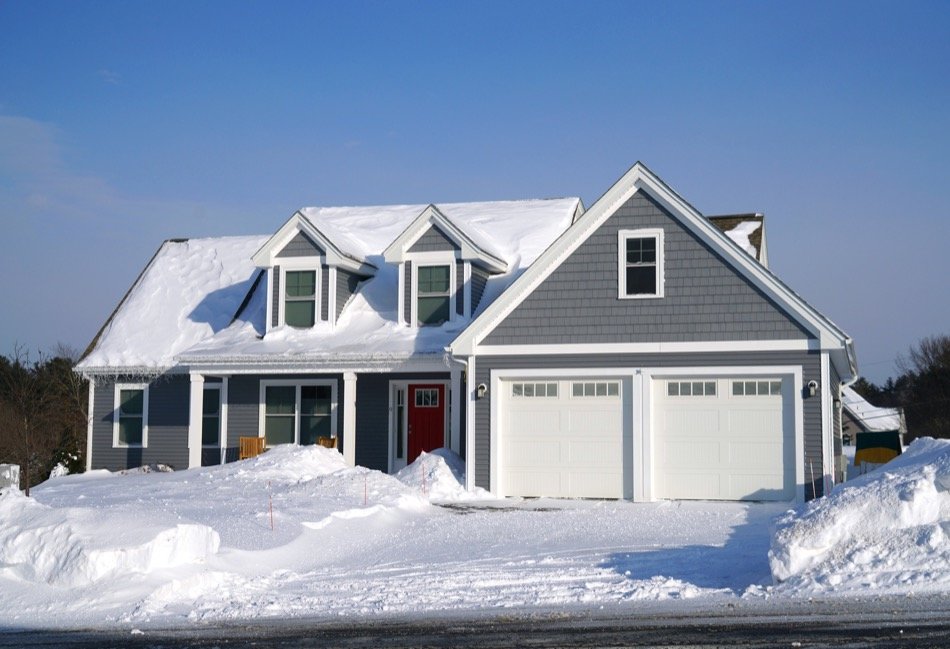4 Easy Ways to Winterize Your Home
Posted by Justin Havre on Thursday, August 22nd, 2019 at 10:10am.
 Extremely cold winter weather can be dangerous. Not only can it hurt people and animals, but it can also cause harm to homes. Before the first snowfalls come, homeowners should winterize their home to prepare and protect it. There are many ways homeowners can winterize their home. Some are complex and time-consuming, and others are quick and easy weekend DIY projects. Here are some of those quick and easy ways to winterize a home that actually work and show results that anyone can see.
Extremely cold winter weather can be dangerous. Not only can it hurt people and animals, but it can also cause harm to homes. Before the first snowfalls come, homeowners should winterize their home to prepare and protect it. There are many ways homeowners can winterize their home. Some are complex and time-consuming, and others are quick and easy weekend DIY projects. Here are some of those quick and easy ways to winterize a home that actually work and show results that anyone can see.
1. Protect All Water Pipes
If water remains still in a pipe during extremely cold weather, it can freeze, and when water freezes, it expands. Expanding ice puts pressure on pipes and potentially lead them to bursting. As one can imagine, broken water pipes in the middle of winter can be a big problem. In order to help prevent this, there are a few different things homeowners can do:
- Open up cupboard doors to allow warm air to flow around pipes that are under sinks, especially if it is against an exterior wall
- Let sinks trickle to keep water from standing in the pipes, reducing the risk of freezing
- Wrap something like a foam sheet or an old blanket around pipes to insulate them
Doing one or more of these simple tasks can drastically help lower the chances of broken pipes and prevent homeowners from having a flooded home in the middle of January.
2. Reverse All Ceiling Fans
Normally, when someone uses a ceiling fan, it’s to cool off a room that’s too hot. However, by reversing the direction the blades go in, the fan can be used to make cold rooms warmer. Most ceiling fans have a switch either directly on the base of the fan or on the wall switch if it’s too high to be operated manually. Because heat naturally rises, it has a tendency to get stuck on the ceiling. When a ceiling fan is run in reverse, the blades force the air back down, warming the room. For homeowners who have ceiling fans in their home, this can be a great way to warm the home without resorting to over-using the furnace.
3. Change the Furnace Filter
Just like a water filter in a refrigerator, furnace filters also need to be changed regularly. Every furnace will use a different sized filter, so homeowners who are unfamiliar with their furnace will need to check before buying a replacement. Filters typically need to be changed every three or four months, but again, this can vary depending on the type of furnace and filter. Changing the filter regularly helps ensure that the furnace will continue running smoothly, because no one wants to be stuck in the middle of winter without a source of heat.
4. Block Drafts With Door Snakes
It’s common for cold wind to find its way into a West Pointe home from underneath doors because the weather striping that was originally there has worn or rotted away. If the stripping can’t be replaced or the problem is more extreme than replacement will fix, try using a door snake. Door snakes are just long tubes of fabric weighted down with plastic beads to keep them in place. They can be placed in front of doors and prevent drafts from entering the home, helping keep it warmer and more comfortable.
Winterizing a home can be quite simple. Using these different strategies only takes a short time and can help make a home warmer and better protected during the winter.
